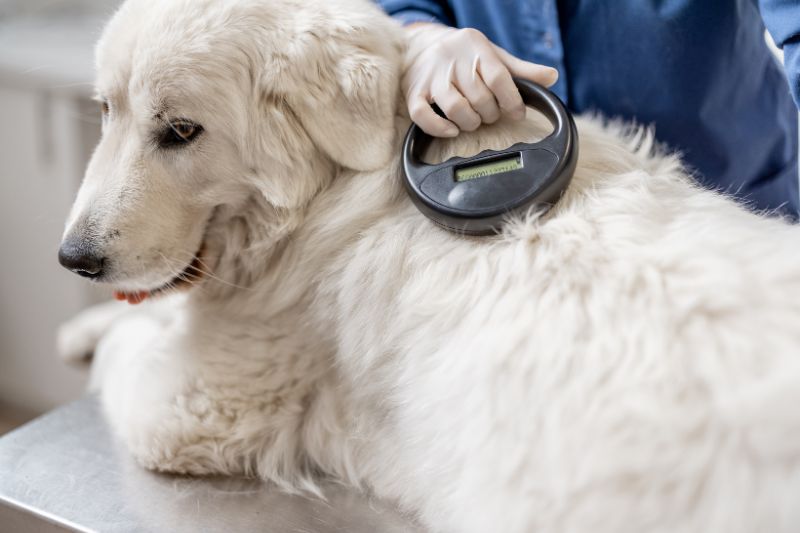Pet Microchips
An extremely small electrical device called a microchip is injected under the skin on the back of the neck. Each pet is given a special identifying number that can be read by a portable scanner and is registered in a national directory.


Pet Microchips
It’s always sad to see a flyer stapled to a signpost or on a bulletin board at the grocery store with a picture of a lost pet. You imagine a child waiting for the phone to ring, hoping that some kind person happens to find his kitty and see his flyer. Sadly, once a pet is lost, the odds are against her finding her way home again. According to the American Humane Association, only about seventeen percent of lost dogs and two percent of cats ever find their way back from shelters to their original owners. Almost 9.6 million pets are euthanized every year because their owners can’t be found. There are ways to beat these odds, though, and they involve using nametags, collars, and microchips. To give your pet the best chance to be identified, no matter how far she roams, have her implanted with a microchip and wear an updated nametag.
Besides providing your contact information, a collar, and nametag notifies others that your pet is domesticated, and strangers are more likely to assist your pet in finding her home. Since tags can fade, rust, or get scratched and become impossible to read, AAHA suggests inspecting your pet’s tags and collars once a month. If the tags become unreadable or outdated, it is important to immediately replace them with a new nametag with your current contact information.
Although tags and collars are important, they can tear or slip off. At San Antonio Animal Hospital, with microchipping, on the other hand, a veterinarian injects a tiny computer chip—about the size of a grain of rice—just under your pet’s skin, between the shoulder blades. A number on the microchip is entered into an international database, like the Central Animal Registry or PETtrac. If your dog or cat is found, any animal hospital, shelter, or humane society can use a microchip reader to read the unique ID number contained on the chip. The veterinarian or worker can access the database by inputting the number given off by the microchip. The chip can’t be lost or damaged, and it lasts for the pet’s lifetime. However, it is your responsibility as the pet owner to update your contact information.
